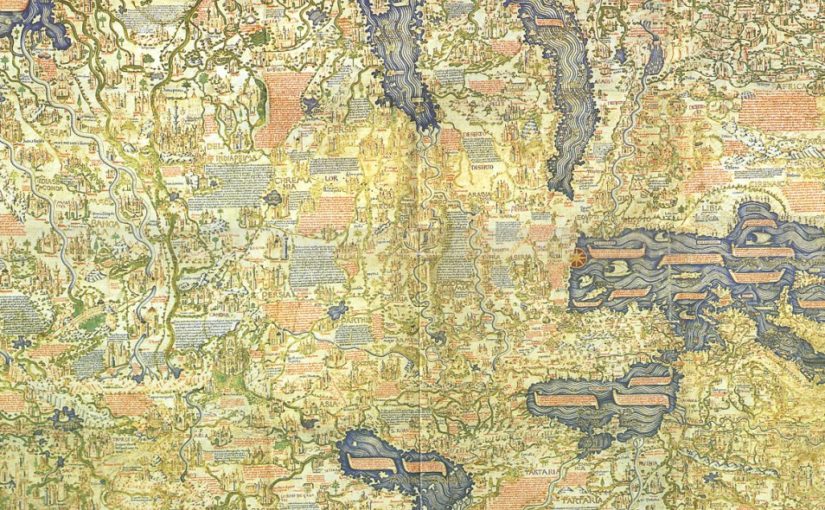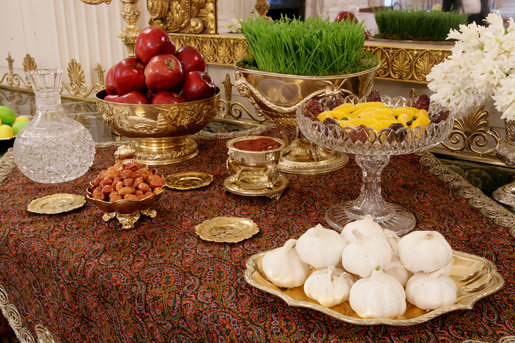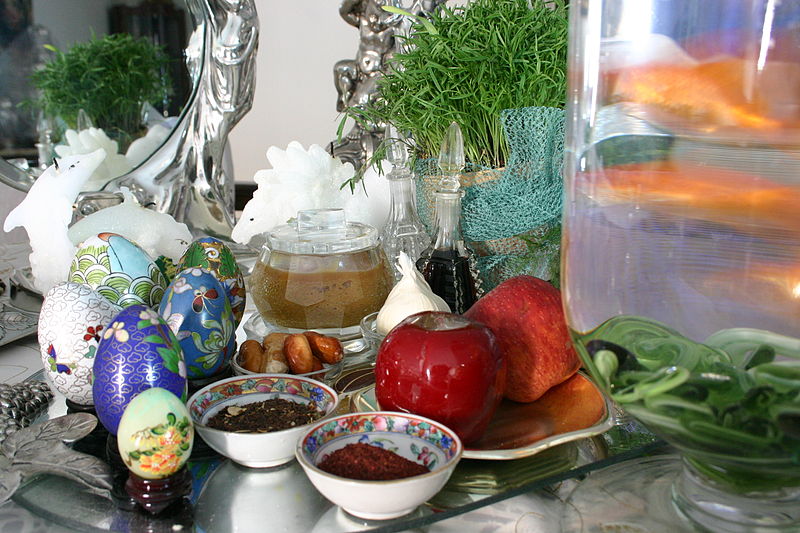Today’s blog post is about the Persian New Year’s festival, called نوروز Nowruz or Nooruz, which literally means “new day”. Nowruz is celebrated on the spring equinox, which usually falls on 21 March and marks the beginning of the Persian calendar. The time for the equinox is calculated exactly each year and has a different time in different locations. Nowruz has been celebrated for over 3,000 years and partly has its roots in Zoroastrianism. It is a public holiday in many countries of Central Asia, and it is an occasion for family and friends to gather and celebrate together.
A central feature of this celebration is the so-called Haft Seen table (هفتسین ) or the Seven S’s. These are 7 items that are placed on the table and which all start with the letter ‘S’:
- sabzeh ( سبزه)- wheat, barley, mung bean or lentil sprouts growing in a dish, often from seven different kinds of seeds – symbolizing rebirth
- samanu (سمنو)- sweet pudding made from wheat germ – symbolizing affluence
- senjed ( سنجد)- dried oleaster Wild Olive fruit – symbolizing love
- sir (سیر)- garlic – symbolizing medicine
- sib ( سیب)- apples – symbolizing beauty and health
- somaaq (سماق)- sumac fruit – symbolizing (the color of) sunrise
- serkeh ( سرکه) – vinegar – symbolizing old age and patience
Other items on the table may include:
– sekkeh (سکه) coins – symbolizing wealth
– sonbol (سنبل) hyacinth – symbolizing fertility
– a mirror (ايبه) – symbolizing honesty and cleanness
– painted eggs – symbolizing fertility
– lit candles – symbolizing happiness and enlightenment
– a bowl of water with goldfish (ماهی قرمز )- “life within life”
– pomegranates (ابار)
– sprays of cypress or pine
– rosewater golab (گلاب ) – believed to have magical cleansing powers
– a holy book or a poetry book (very often the Divan of Hafiz or the Shahnameh)
– aajeel ( اجیل)- dried nuts, berries, dates or raisins
– clay figurines of animals



